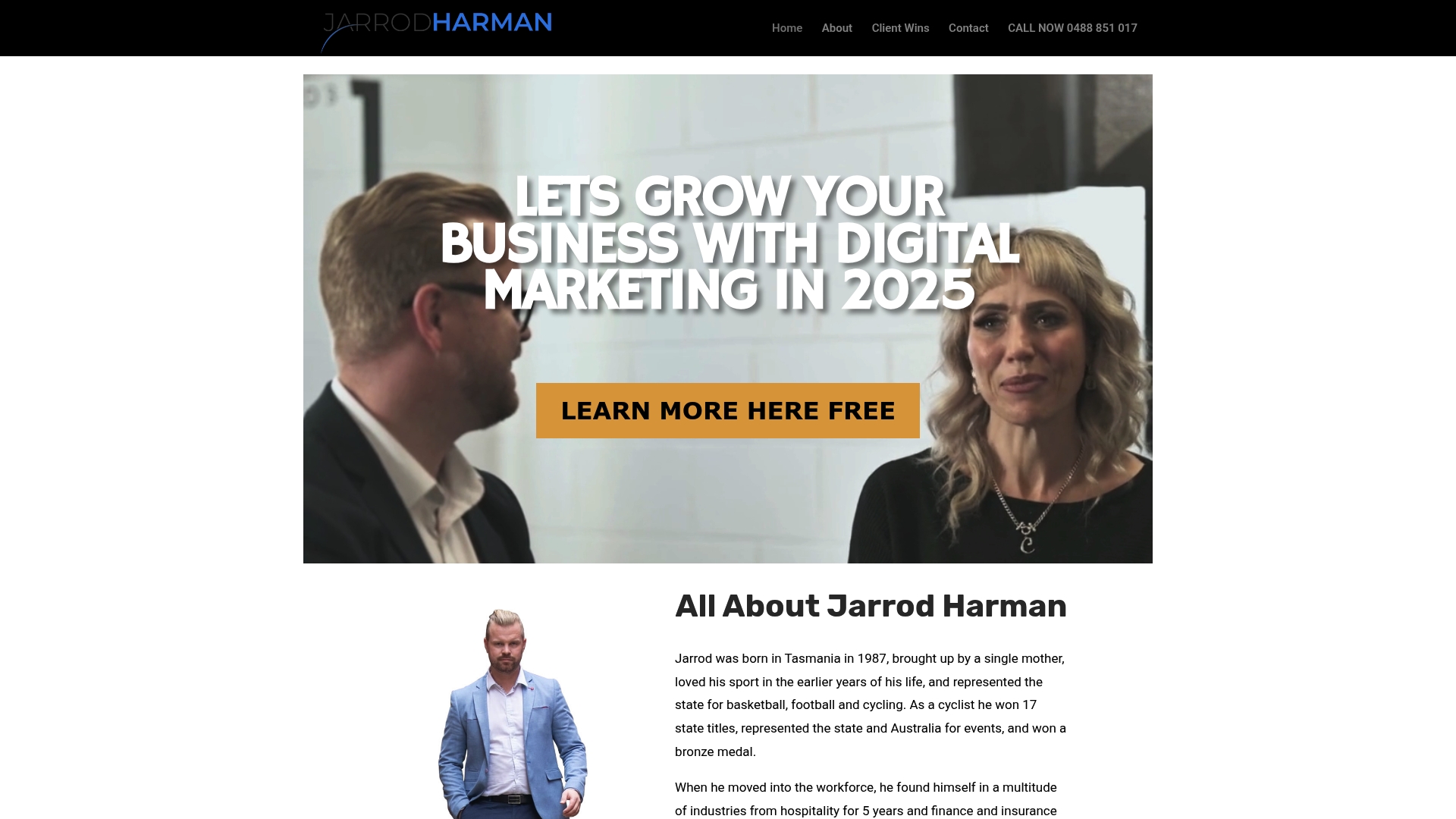Did you know that companies with well-defined customer profiles drive up to 68 percent higher conversion rates? Understanding exactly who benefits most from your services lays the groundwork for every successful marketing move. Focusing on the right profiles helps you design messaging that attracts attention, build digital assets that convert, and develop campaigns that reach your best prospects. By following proven steps for each stage, you can turn prospects into loyal clients and grow your business with confidence.
Table of Contents
- Step 1: Define Your Ideal Customer Profile
- Step 2: Create High-Converting Digital Assets
- Step 3: Launch Targeted Omnichannel Ad Campaigns
- Step 4: Leverage Social Proof And Client Success Stories
- Step 5: Monitor Results And Optimize Lead Flow
Quick Summary
| Key Point | Explanation |
|---|---|
| 1. Define your ideal customer profile | Create a detailed customer persona to focus marketing efforts effectively and enhance messaging relevance. |
| 2. Develop high-converting digital assets | Design valuable content like guides and case studies that address potential clients’ pain points and attract leads. |
| 3. Launch targeted omnichannel campaigns | Use data to create consistent messaging across multiple platforms, ensuring you reach customers where they are active. |
| 4. Utilize social proof effectively | Showcase client success stories and testimonials to build trust and demonstrate real value, enhancing credibility. |
| 5. Monitor results for continuous optimization | Regularly analyze marketing data to refine strategies and improve lead generation effectiveness through actionable insights. |
Step 1: Define your ideal customer profile
Defining your ideal customer profile is about creating a precise blueprint of the customers who will benefit most from your business offerings. This step helps you strategically focus your marketing efforts and create more targeted messaging.
Start by gathering comprehensive data about your existing customer base. According to research from The Institute of Sales Professionals, an ideal customer profile allows businesses to tailor marketing strategies and provide superior customer experiences.
Begin with basic demographic information like age, income level, location, and professional background. Then dig deeper into psychographic details including goals, challenges, motivations, and purchasing behaviors. As detailed in Colby University’s research, your ideal customer profile should encompass industry characteristics, specific income ranges, and precise pain points.
Consider creating a detailed persona document that captures these elements. Include specific details like typical job titles, common professional challenges, preferred communication channels, and decision making patterns. This helps your team develop laser focused marketing approaches.
Here’s a summary of key elements to include when defining your ideal customer profile:
| Category | Example Details | Why It Matters |
|---|---|---|
| Demographics | Age Income Location |
Understand who your core buyers are |
| Psychographics | Goals Challenges Motivations |
Tailor messaging to audience drivers |
| Professional Info | Job Titles Industry Company Size |
Identify decision makers and industry fit |
| Behaviours | Buying Habits Preferred Channels |
Optimise outreach and communication |
| Pain Points | Specific Challenges Needs |
Address real problems to increase relevance |
Pro Tip: Review your current best customers and identify common characteristics that make them successful with your product or service.
Once you have defined your ideal customer profile, you will be ready to develop targeted marketing strategies and create content that resonates directly with your most promising potential clients.
Step 2: Create high-converting digital assets
Creating high-converting digital assets is about developing strategic content that attracts potential customers and transforms them into qualified leads. Your goal is to design resources that not only capture attention but also provide genuine value to your target audience.
Research from Northern Kentucky University highlights that effective digital assets enable salespeople to tailor their approach and optimize resource allocation. Start by understanding your ideal customer profile from the previous step and align your assets directly with their specific needs and pain points.
Focus on developing diverse digital resources such as downloadable guides, interactive calculators, comprehensive whitepapers, video tutorials, and detailed case studies. According to B2B Marketing Research, a targeted content strategy addressing specific business challenges is crucial for creating high-converting assets.
Each digital asset should solve a real problem for your potential customers. For instance, if you serve small business owners struggling with marketing, create a step-by-step marketing strategy template or an ROI calculator that demonstrates potential business growth.
Pro Tip: Always include a clear call to action and make your asset easily shareable across multiple platforms to maximize its reach and impact.
By developing strategic digital assets that provide genuine value, you create powerful magnets that attract and engage your ideal customers while positioning your business as a trusted resource in your industry.

Step 3: Launch targeted omnichannel ad campaigns
Launching targeted omnichannel ad campaigns transforms your marketing approach by creating a seamless customer experience across multiple digital platforms. Your objective is to strategically reach potential customers where they are most active and receptive.
Research from Northern Kentucky University highlights the importance of data-driven decision making and building strong relationships through diversified marketing channels. Start by mapping out the platforms your ideal customer profile uses most frequently.
According to B2B Marketing Research, Account-Based Marketing (ABM) strategies involve personalized outreach through targeted social media campaigns, tailored email sequences, and strategic direct marketing efforts. This means creating consistent messaging that resonates across Google Ads, Facebook, LinkedIn, Instagram, and email marketing platforms.
Each ad campaign should be precision-targeted with specific messaging that speaks directly to different segments of your audience. Use the customer insights you developed earlier to craft compelling ad copy that addresses specific pain points and offers clear solutions.
Pro Tip: Implement conversion tracking and use analytics to continuously refine your campaigns based on real performance data.
By developing a sophisticated omnichannel approach that maintains consistent branding and targeted messaging, you create multiple touchpoints that guide potential customers through their buying journey with precision and care.
Step 4: Leverage social proof and client success stories
Leveraging social proof and client success stories is about transforming your satisfied customers into powerful marketing advocates who can authentically demonstrate the real value of your services. Your goal is to build trust and credibility by showcasing tangible results that potential clients can relate to.
According to research from the Federal Trade Commission, lead generation fundamentally connects companies with consumers who have shown genuine interest in products or services. This connection becomes significantly stronger when potential clients can see concrete evidence of your effectiveness.
B2B Marketing Research emphasizes the power of utilizing case studies and industry reports to showcase expertise. Start by collecting detailed testimonials that highlight specific challenges your clients overcame and the measurable outcomes they achieved. Focus on quantifiable results like percentage increases in revenue, cost savings, or efficiency improvements.
Create diverse formats for sharing these success stories such as video testimonials, written case studies, detailed infographics, and client interview snippets. Place these strategically across your website, social media channels, email campaigns, and sales presentations to provide consistent social validation.
Pro Tip: Always obtain explicit permission from clients and consider anonymizing details if necessary to maintain professional confidentiality.
By strategically presenting authentic client success stories, you transform abstract marketing claims into compelling narratives that demonstrate your genuine capability to solve real business challenges.
Step 5: Monitor results and optimize lead flow
Monitoring results and optimizing lead flow is about transforming raw data into actionable insights that continuously improve your marketing and sales strategies. Your objective is to create a dynamic system that learns and adapts based on real performance metrics.
Research from Northern Kentucky University emphasizes that meticulously analyzing data allows sales teams to tailor lead generation efforts for maximum impact and optimize resource allocation. This means implementing robust tracking mechanisms across all your digital marketing channels.
According to B2B Marketing Research, regularly analyzing the effectiveness of your lead scoring system is crucial. Start by establishing key performance indicators such as conversion rates, cost per lead, engagement metrics, and revenue generated from different marketing campaigns.
Utilize advanced analytics tools to track customer journeys comprehensively. Pay close attention to which channels generate the highest quality leads, what content resonates most with your target audience, and where potential customers might be dropping out of your sales funnel.
Pro Tip: Set up automated reporting and schedule monthly reviews to ensure you are consistently refining your lead generation strategies based on empirical evidence.
By maintaining a data-driven approach to monitoring and optimizing your lead flow, you create a responsive marketing ecosystem that continually improves its ability to attract and convert high-quality potential customers.
Unlock Consistent Online Leads With Proven Strategies
Struggling to generate steady leads online and grow your business? This article shows how defining your ideal customer profile and creating targeted digital assets can unlock new client opportunities. Yet, many business owners get overwhelmed trying to connect all the pieces and execute an effective omnichannel lead generation system.
At Business Warriors, we understand these challenges and offer tailored solutions through our unique Marketing Vortex method. Combining SEO, Google Ads, Meta advertising, email marketing, social media, and web development, our approach delivers an integrated strategy that drives consistent leads and boosts sales. You don’t need to guess which tactics work or where to start — we provide a clear, client-focused roadmap that transforms potential customers into loyal clients.
Explore insights and success stories on Uncategorized Archives – Jarrod Harman to see how our strategies come alive in real business contexts.

Ready to stop chasing random leads and start growing with confidence? Visit https://jarrodharman.com now and connect with a team that specialises in helping service-based businesses scale using smart, measurable marketing systems. Take the first step today and transform your digital marketing from costly experiments into consistent client acquisition.
Frequently Asked Questions
How can I define my ideal customer profile to generate leads online?
Defining your ideal customer profile involves gathering demographic and psychographic data about your current customers. Start by identifying their age, income level, challenges, and motivations to create targeted marketing strategies that resonate with potential leads.
What types of digital assets should I create for lead generation?
To generate leads online, create digital assets like downloadable guides, video tutorials, and case studies that address your audience’s specific pain points. Focus on delivering genuine value with each asset, as this can significantly enhance conversion rates.
What platforms are best for launching targeted omnichannel ad campaigns?
Utilize platforms where your target audience is most active, such as Google Ads, Facebook, and LinkedIn, for your omnichannel campaigns. Ensure the messaging across these channels is consistent and tailored to address the needs of different audience segments.
How can I effectively use client testimonials to generate leads?
Leverage client testimonials by sharing success stories that highlight measurable results achieved with your service. Present these testimonials in various formats, such as videos or infographics, to build credibility and engage potential leads.
What metrics should I monitor to optimize lead flow?
Monitor key performance indicators like conversion rates, cost per lead, and engagement metrics to optimize your lead flow. Set regular check-ins, like monthly reviews, to analyze this data and identify areas for improvement in your marketing strategies.
How often should I review my lead generation strategies?
Review your lead generation strategies at least once a month to stay responsive to performance data. This ongoing analysis helps you quickly adapt and implement changes that can enhance lead quality and conversion rates.
Recommended
- How to Generate Leads in Digital Marketing: Proven Strategies – Jarrod Harman
- Understanding Online Lead Generation: A Complete Guide – Jarrod Harman
- 10 Effective Lead Generation Strategies for Businesses – Jarrod Harman
- How to Nurture Leads Online for Effective Conversions – Jarrod Harman
- Traffic Generation Strategies: Complete 2024 Guide


